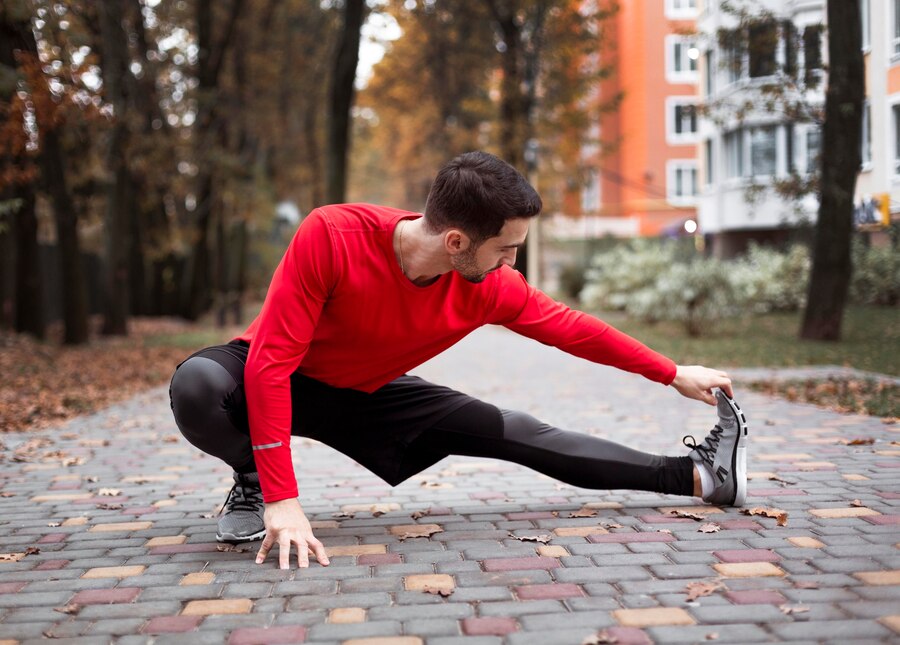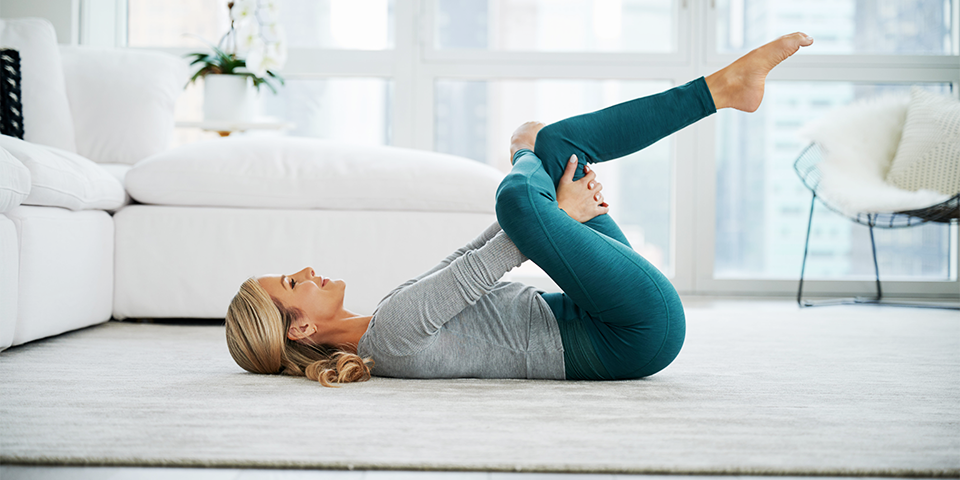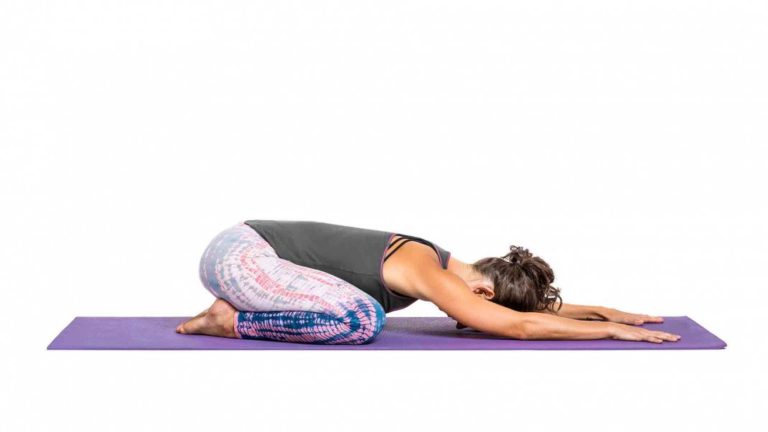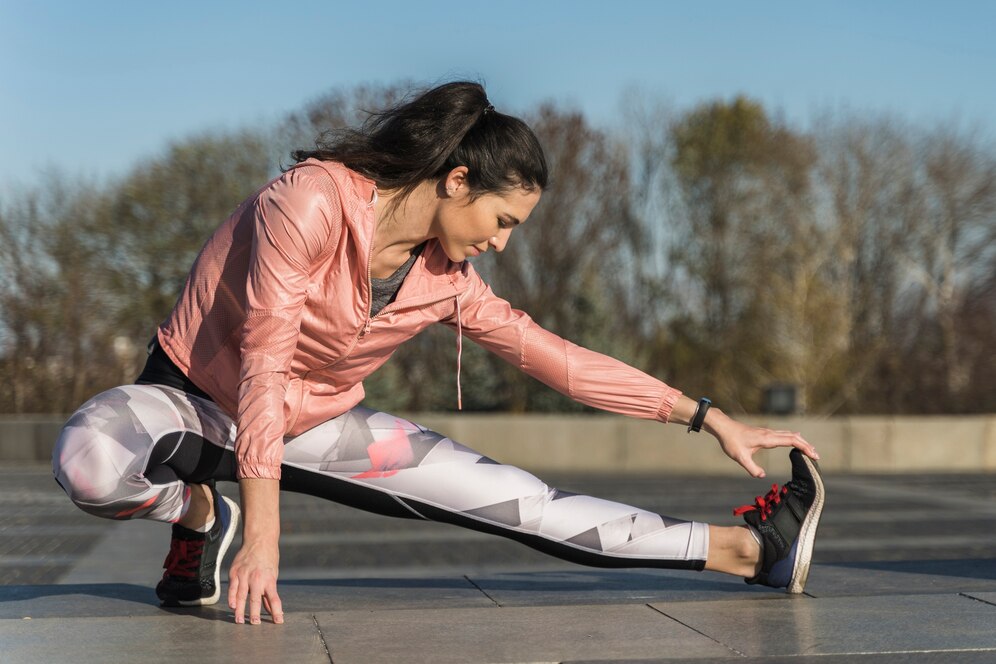Having just completed a run, your muscles are warmed up and blood is flowing freely throughout your body.
However, it’s important not to stop there.
Failing to stretch after a run can leave your muscles feeling tight and sore later on.
Proper post-run stretching can help counteract this, allowing your muscles to recover and prepare you for future runs fully.
This article will be about the importance of stretching after running and provide recommendations for some key post-run stretches you can do to maximize the benefits of your run and speed muscle recovery.
Dedicating just 5-10 minutes to light stretching moves can significantly reduce your risk of exercise-related soreness and keep your body in ideal running condition.
Let’s get started:
Post Run Stretches For Beginners
Here are the best stretches to do after running:
1. Spinal Twist

The post-run spinal twist stretch is beneficial for runners as it helps release tension along the entire length of the spine.
By gently rotating the spine, this stretch promotes flexibility and improved range of motion in the torso.
It also aids in reducing stiffness in the back muscles, contributing to better posture and a decreased risk of back discomfort, which can be especially beneficial after the impact of a run.
How to do it?
- Starting Position: Lie on your back with your knees bent and feet flat on the floor.
- Arm Position: Extend your arms out to the sides at shoulder height, forming a T-shape.
- Execution: Gently drop your knees to one side while keeping your shoulders on the ground. Ensure both shoulder blades remain in contact with the floor.
- Hold: Maintain the stretch for 15-30 seconds, feeling a gentle twist along your spine.
- Return: Slowly return to the starting position and repeat on the other side.
2. Hamstring Stretch

A key element in post-run recovery, the hamstring stretch targets the muscles at the back of the thighs.
This stretch aids in preventing tightness in the hamstrings, which is crucial for runners as it contributes to enhanced stride length and flexibility.
Incorporating this stretch into your post-run routine can alleviate muscle tension, reduce the risk of injuries, and promote lower body flexibility, allowing for a smoother and more comfortable running experience.
How to do it?
- Starting Position: Sit on the floor with one leg extended straight and the other leg bent, placing the sole of your foot against the inner thigh of the extended leg.
- Forward Lean: Hinge at your hips and lean forward over the extended leg, reaching toward your toes.
- Hold: Maintain the stretch for 15-30 seconds, feeling the stretch along the back of your extended leg.
- Switch: Switch legs and repeat the stretch on the other side.
3. Quad Stretch

Post-run quad stretches are essential for maintaining optimal muscle flexibility and preventing tightness in the front thigh muscles.
By standing on one leg and bending the other at the knee, this stretch effectively targets the quadriceps.
It is one of the best stretches to do after running that aids in the restoration of muscle length, reduces stiffness, and improves the range of motion in the hip and knee joints.
How to do it?
- Starting Position: Stand on one leg.
- Leg Position: Bend your other leg at the knee, bringing your heel towards your buttocks.
- Hold Ankle: Hold your ankle with your hand on the same side.
- Hip Movement: Keep your knees close together and gently push your hip forward to intensify the stretch.
- Hold: Maintain the stretch for 20-40 seconds and switch legs.
4. Figure Four

The figure four stretch is a particularly beneficial stretch for runners after running as it targets the hip area, an essential region involved in running mechanics.
By gently pressing the knee away from the body, this stretch helps alleviate tension in the hips and promotes flexibility. It is especially effective in addressing tightness that may develop from the repetitive motion of running.
Incorporating the Figure four stretch into your post-run routine can enhance hip mobility, reduce muscle tightness, and contribute to an overall more comfortable and fluid running experience.
How to do it?
- Starting Position: Sit on the floor with your knees bent and feet flat.
- Leg Position: Lift your right leg and place your right ankle on your left thigh, forming a “4” shape.
- Gentle Pressure: Gently press your right knee away from your body with your right hand, feeling a stretch in your right hip.
- Hold: Maintain the stretch for 15-30 seconds and switch legs.
5. Child’s Pose

As a comprehensive full-body stretch, the child’s pose is an excellent addition to post-run recovery.
By sitting back on your heels and extending your arms forward, this stretch effectively targets the lower back, hips, and shoulders. It encourages the release of tension in these areas, promoting relaxation and reducing muscle soreness.
The child’s pose also aids in elongating the spine and fostering a sense of calm, making it an ideal stretch to wind down after a run.
How to do it?
- Starting Position: Begin on your hands and knees in a tabletop position.
- Sit Back: Sit back on your heels, extending your arms forward on the ground.
- Chest Lowering: Lower your chest toward the floor and rest your forehead on the ground.
- Arm Position: Keep your arms extended or bring them alongside your body for variation.
- Hold: Hold the stretch for 30 seconds to 1 minute, focusing on deep breaths and allowing your body to relax into the pose.
Over To You
Incorporating stretches into your post-run routine is crucial for improving performance and preventing injuries.
By targeting key muscle groups such as the hamstrings, quads, and calves, you can alleviate tension and improve flexibility.
Remember to hold each stretch for at least 30 seconds and listen to your body’s needs.
Don’t be afraid to modify or add in additional stretches that work for you. And above all, make it a habit to include post-run stretches in your routine to reap the full benefits.




